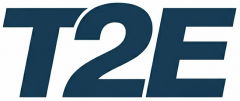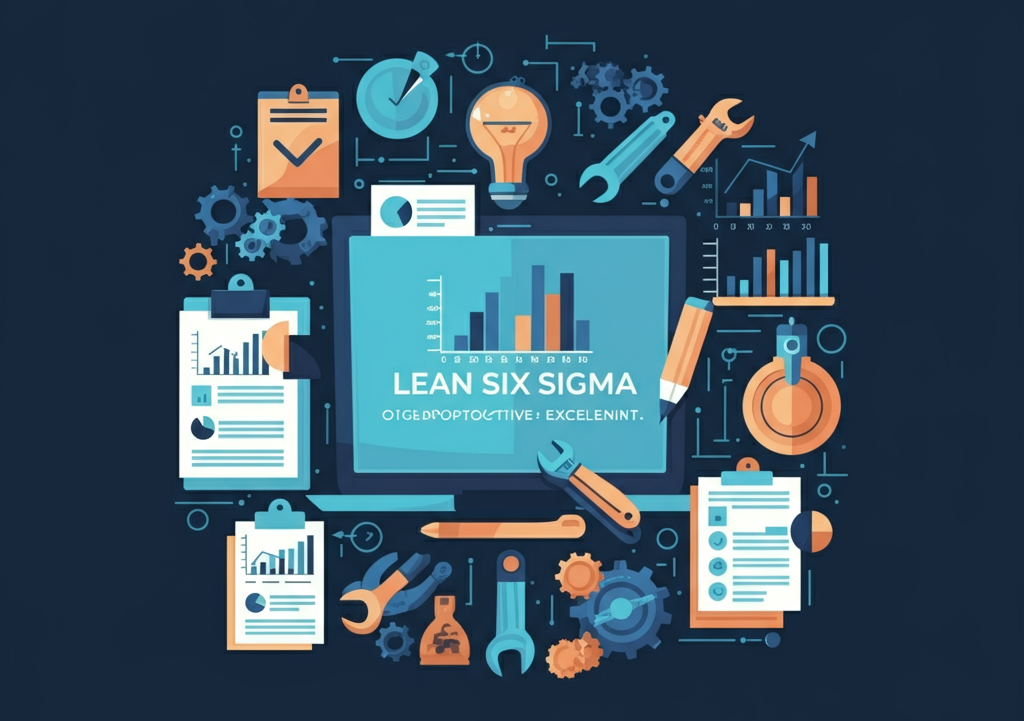I was in a discussion with two project managers about using Earned Value Management methodology on their projects. One supported the methodology for its detailed cost and schedule control, while the other criticized it as too complex and time-consuming.
After a lengthy discussion, we came to the conclusion that both arguments had valid points. Earned Value Management (EVM) is an effective methodology for monitoring and controlling project cost and schedule performance. It shows a project’s progress in real-time, helping managers make decisions and take action.
Definition
What is EVM? EVM is a project management method that combines scope, cost, and schedule metrics to help managers forecast outcomes. By comparing actual progress and costs to planned targets, EVM highlights variances and enables adjustments to keep projects on track.
EVM Key Components
To fully grasp EVM, it’s essential to understand its core components:
- Planned Value (PV): Also called Budgeted Cost of Work Scheduled (BCWS), this is the approved budget for a specific task or work component.
- Earned Value (EV): Referred to as Budgeted Cost of Work Performed (BCWP), this measures the value of work completed at a given point in time. It is calculated by multiplying the planned value by the percentage of work completed.
- Actual Cost (AC): Also called Actual Cost of Work Performed (ACWP), this represents the total cost incurred for a task or work component.
- Schedule Variance (SV): This metric reflects the difference between earned value and planned value, revealing whether a project is ahead of or behind schedule.
- Cost Variance (CV): This metric highlights the difference between earned value and actual cost, indicating whether a project is over or under budget.
- Schedule Performance Index (SPI): SPI compares the amount of work completed to the amount that should have been completed according to the schedule. An SPI greater than 1 indicates the project is ahead of schedule, while an SPI less than 1 signals delays.
- Cost Performance Index (CPI): CPI compares the value of completed work to the actual costs incurred. A CPI greater than 1 suggests the project is under budget, while a CPI less than 1 indicates overspending.
These metrics allow project managers to monitor progress, identify potential challenges, and make informed decisions. By regularly analyzing these indicators, managers can allocate resources effectively and adjust timelines to ensure smooth project execution.
EVM is a powerful project estimation tool, but its complexity can be challenging for teams without proper training. Proper education and preparation are crucial for successful EVM implementation.
Drawbacks of EVM
As with any project management methodology, Earned Value Management has its limitations. One common criticism is that it can be overly complex and require substantial effort to implement and maintain. This complexity may divert valuable resources away from project delivery, creating additional administrative burdens.
Management Reserves and Potential Pitfalls
During our discussion, we also explored the concept of “management reserves” within EVM. These funds cover unexpected costs or delays. While these reserves offer a safety net, they can lead to complacency and reduce urgency in addressing issues.
Suitability for Different Project Types
EVM is not a one-size-fits-all solution. It works best for projects with a well-defined scope, clear objectives, deliverables, and a stable timeline. Therefore, for fast-paced and evolving Agile projects, EVM may not be practical. These types of projects can lack the predictability necessary to fully leverage EVM’s benefits.
Data Accuracy and Reliability
The success of EVM heavily relies on the accuracy and reliability of input data. So, without precise and up-to-date data, EVM’s metrics and insights can be misleading, diminishing its value. Organizations with immature planning processes or unreliable data systems may struggle to realize the full potential of EVM.
Importance of Team Training in EVM
Proper training is critical to the successful implementation of EVM. Originally developed for government contracts where meticulous reporting was essential, EVM requires a disciplined approach. So, teams must fully understand its concepts, terminology, formulas, and calculations to use it effectively. In corporate environments where discipline in project reporting may vary, investing in training for project managers and team members is essential to ensure EVM drives meaningful results.
EVM as a Monitoring Tool
It’s important to note that Earned Value Management is primarily a tool for monitoring and controlling project performance—it does not provide solutions for improving outcomes. While EVM identifies issues and deviations from the plan, it is up to project managers to analyze the data and devise strategies to address these challenges using their expertise.
Additionally, EVM should not be the sole indicator of a project’s success or failure. Other factors, such as stakeholder satisfaction, quality of deliverables, and schedule adherence, must also be considered when evaluating overall project performance.
Avoid Misusing EVM for Micromanagement
Earned Value Management is not a tool for micromanagement. Instead, project managers should leverage EVM data to identify trends and foresee potential issues, while trusting their team members to manage individual tasks and provide progress updates. Unfortunately, some project managers misuse EVM to scrutinize the performance of individual team members. This approach undermines the purpose of the methodology and detracts from its effectiveness. EVM should be a strategic tool, not a mechanism for micromanaging.
The Importance of Communication
Effective and transparent communication of EVM results is critical to project success. Project managers should share both positive and negative insights with stakeholders to foster trust and ensure transparency. Open communication strengthens relationships between team members and stakeholders, paving the way for smoother collaboration and better project outcomes.
Beyond simply presenting EVM results, project managers must also explain the reasons behind any variances and their potential impact. This level of detail helps stakeholders gain a clearer understanding of the project’s current status and enables them to make well-informed decisions about future actions.
Furthermore, communication plays a key role in the successful implementation of corrective actions. Engaging team members in discussions about potential solutions and inviting their input not only empowers them but also fosters a sense of ownership. This collaborative approach enhances their commitment to addressing challenges effectively and contributes to the overall success of the project.
The Role of Teamwork
Effective teamwork is essential for successful EVM implementation. The success of EVM depends on the reliability and accuracy of project data, which requires collaboration among team members responsible for tracking and reporting project progress. Teamwork in EVM implementation involves communicating clearly, sharing information, and working together towards a common goal. Here are some important aspects of teamwork that contribute to successful EVM implementation:
- Open communication: Effective communication is crucial for keeping the project team on the same page. This includes clear and concise communication about project goals, roles and responsibilities, expectations, and any potential issues or roadblocks.
- Collaboration: Collaboration among team members helps to identify potential problems early on so they can be addressed promptly. It also encourages idea sharing and problem solving to improve project performance.
- Transparency: Transparency within the project team creates trust and promotes accountability. When everyone has access to the same information, it makes it easier to understand decisions and work together towards a common goal.
- Flexibility: Project management requires flexibility to adapt to changing circumstances. Effective project managers are able to adjust plans and resources as needed to keep projects on track.
- Continuous Improvement: The final step in successful project management is continuous improvement. By regularly evaluating processes, procedures, and outcomes, project teams can identify areas for improvement and make necessary changes for future projects.
Additional Tools and Techniques
In addition to these key components of effective project management, there are also various tools and techniques that can aid in successful project delivery. These include:
- Project Management Software: With advancements in technology, there is now a plethora of software options available to assist project teams in organizing, planning, and tracking progress. Some popular examples include Trello, Asana, and Microsoft Project.
- Risk Management: Identifying and managing risks is an important aspect of project management. This involves assessing potential risks and developing strategies to mitigate or avoid them. Tools such as a risk register can help keep track of identified risks and their corresponding actions.
- Communication Plan: Effective communication is vital for keeping all stakeholders informed and aligned throughout the project lifecycle. A communication plan explains how information will be shared, who will share it, and which channels will be used.
- Project Documentation: Documenting key information such as project goals, milestones, and decisions made is crucial for effective project management. It provides a reference for stakeholders and team members to understand the project’s progress and current state.
- Change Management: Change is inevitable in any project, whether it be scope changes, schedule changes, or resource changes. A change management plan explains how changes will be evaluated, approved, and communicated to minimize impact on project success.
- Contingency Planning: Despite thorough planning and risk management efforts, unexpected events can still occur during a project. Having contingency plans in place can help mitigate these unforeseen circumstances and keep the project on track.
- Lessons Learned: At the end of each project, it’s important to hold a lessons learned session to review what went well and identify areas for improvement. This helps teams gather insights for future projects.
- Project Closure: Once all deliverables are completed and approved by stakeholders, it’s time to officially close the project. This includes finalizing all documentation, conducting a final project review, and transitioning any remaining resources or responsibilities.
- Continuous Improvement: Project management practices are constantly evolving, and it is important for project managers to stay updated on best practices and new methodologies. Continuous improvement involves regularly reviewing and adapting processes to ensure maximum efficiency and success in future projects.
Conclusion
While I would never discourage a project manager from using tools that support their success, implementing Earned Value Management requires discipline and careful consideration. Establishing accurate baseline data can be a significant challenge and training your team to understand and effectively use EVM demands time and effort. To maximize its impact, EVM should be supported by other robust project management processes.
In my experience managing corporate projects, client satisfaction and the quality of deliverables take center stage. For clients requiring precise tracking and detailed cost reporting, EVM can be an excellent choice. However, it’s vital to ensure that EVM enhances the project rather than hinders progress. At the end of the day, the success of your project will be measured by the impact and value you deliver to the client—not solely by internal metrics or reporting tools.
Click here for a post on understanding the differences between project and product management.





